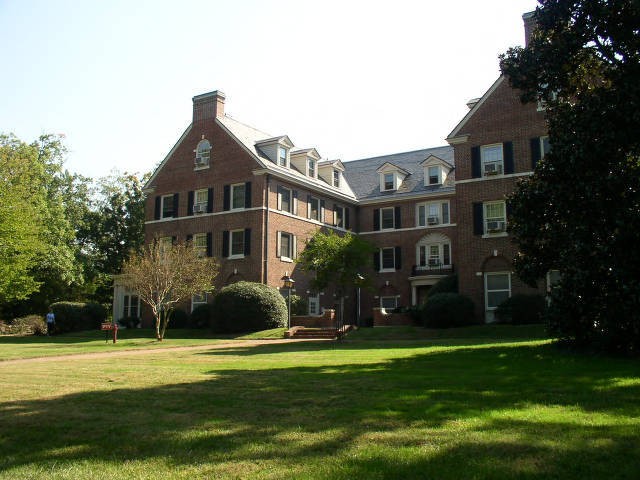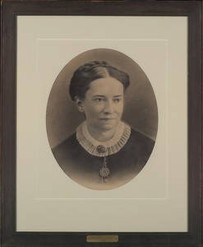Spencer Residence Hall
Introduction
Text-to-speech Audio
Images
Spencer Residence Hall

Cornelia Phillips Spencer

Backstory and Context
Text-to-speech Audio
Spencer Residence Hall was originally called the Women’s Building. The university didn’t want to build a dormitory for women at first, but after being pressured, they built the structure. After increased female enrollment, the university expanded Spencer Residence Hall to include more bed space.
In 1963, women were able to enroll as freshmen and sophomores at the university. Previously, women were only allowed to enroll as juniors, seniors, or as a student in a professional school.
Spencer Residence Hall is named after Cornelia Phillips Spencer, who was a scholar who followed politics. She was asked to write a book that defended the president of the university in 1865, President David L. Swain, from claims that they surrendered to the Union too fast. After the university was under Republican control, Spencer published newspaper articles that defended white supremacy. She didn’t believe in coeducation or equal rights for Black individuals. On the other hand, Spencer was in favor of state public education expansion and education for women.
The University of North Carolina created the Spencer Bell Award that honored a woman at the university every year. In 2004, Chancellor James Moeser discovered that several women he wanted to give the award to said they would refuse the award if it was offered. Consequently, Moeser retired the award. Twelve women received the award before it was retired.
In response, Spencer’s descendants asked Moeser to begin giving out the award again or remove Spencer’s name from Spencer Hall. The family also threatened they would no longer be involved with the Center for the Study of the American South. As a result, Moeser dedicated the Spencer Bell Award to honor the descendants instead of Cornelia Spencer.
The name of Spencer Residence Hall has come into question recently by activists that seek to bring the history behind the building to light. The student activists question the ethicality of keeping Cornelia Spencer as the namesake of Spencer Residence Hall. Spencer Residence Hall is now a co-educational dormitory.
Sources
1. Home-Maps. The University of North Carolina at Chapel Hill. Accessed November 30, 2018. https://maps.unc.edu/buildings/spencer-residence-hall/
Cornelia Phillips Spencer (1826-1908) and Spencer Hall. The Carolina Story: A Virtual Museum of University History. Accessed November 30, 2018. https://museum.unc.edu/exhibits/show/names/spencer-hall.
The Carolina Story: A Virtual Museum of University History. Accessed December 2, 2018. https://museum.unc.edu/exhibits/show/names/spencer-hall.
10. Spencer Residence Hall. UNC University Libraries. Accessed December 02, 2018. https://exhibits.lib.unc.edu/exhibits/show/women_at_unc/tour-home/spencer.
Hensley, Victoria. Names in Brick and Stone: Histories from UNC's Built Landscape - Racism and Sexism on Campus: The Case of Spencer Hall. UNC History. Accessed November 30, 2018. http://unchistory.web.unc.edu/building-narratives/spencer-residence-hall/.
